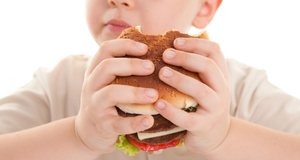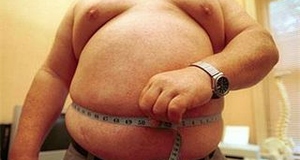The Changing Shape of America's Youth: Combating Childhood Obesity Using the School Nurse
By
2012, Vol. 4 No. 03 | pg. 2/2 | « To reach younger elementary students (kindergarten through second grade), the information would be very basic. While learning letters and phonics, teachers would use healthy foods: Apples for A, bananas for B, carrots for C, etc. Fruits and vegetables would also be used to teach children colors. Simple mathematical problems would be illustrated with the use of berries or other healthy foods. Often times parents supply snacks for classrooms for birthday and holiday parties, and a requirement would be that it be primarily healthy. Apples with peanut butter, bite sized candy bars, and milk are a healthy alternative to the traditional cupcakes or cookies with juice or soda. Teachers would encourage physical activity by allowing children to get up and stretch after prolonged sitting in the classroom. For the older elementary students (third grade through fifth grade), nutrition education would be more advanced. In math, students would learn portion control while learning fractions. Calorie counting and calculating calories burned would be incorporated into story problems. Food groups and the USDA’s MyPlate would also be taught to teach children how much of each food they need to be eating on a daily basis. The information the students are taught would be included in the monthly newsletter from the school nurse, so that parents would learn concurrently with their child. As with the younger students, stretching would be incorporated throughout the school day. Students that fell in the “overweight and obese” category during the initial screening at the beginning of the school year would be offered more education from the school nurse. The school nurse would meet with these children once a week to implement their care plan and allow the student to ask questions. The school nurse would give the children weight loss and management tips by reinforcing the information provided in the classroom. This would also be an appropriate time to evaluate the students’ progress. Students would be less likely to feel embarrassed in this environment because everyone in the group is struggling with the same problems. Students that were found to be pre-diabetic, diabetic, or hypertensive during the initial screening would be additional handouts to take home with tips on how to monitor and maintain blood glucose levels at home. At home tips would include: eating a healthy protein snack prior to physical activity, recognizing the signs and symptoms of hypoglycemia and hyperglycemia, and how to treat hypoglycemia and hyperglycemia. It would also be important for the school nurse to educate the teachers about how to recognize if a student is hypoglycemic or hyperglycemic during the school day and how to handle it. The school nurse would provide information for community resources to interested students and parents to further their success.An evaluation of students’ progress is important in determining the effectiveness of the program. Prior to Christmas break and at the end of the school year (or in the case of year round school in early to mid June), students will be weighed and measured and their BMI compared with the previous data. After data is processed, groups would be modified so that children now falling in the “overweight and obese” category would begin to receive supplemental information. Children who previously had blood sugar and blood pressure checked would also be re-evaluated to determine progress. A letter to the parents would be sent to inform them of their child’s current weight, height, and BMI. As previously mentioned, school nurses receive the education necessary to evaluate this data, implement a care plan, and revise the care plan as needed (Nauta, Byrne, & Wesley, 2009). School nurses are equipped to lead a program as well as mentor teachers during implementation. A school nurse faces many obstacles in their day-to-day activities. Unexpected illnesses, head lice, play ground injuries, and medication administrations are just a few of the reasons why children come into their office every day. Adding to their responsibilities in such a large way seems impossible. They may also feel ill equipped to provide the information needed for children to make these life-changing decisions. If the nurse is committed to the cause, they may have to make changes to their daily schedule. As long as the school nurse stays organized and seeks help from other staff members when needed, it would not be difficult to incorporate a weight management program. In some school systems, school nurses are few and far between. In large schools, there may be one school nurse for thousands of students. The national recommendation for school-nurse-to-student ratio is 1:750, and there are only 13 states that operate within this recommendation (Maughan & Adams, 2011). When nurses are working in schools with a higher ratio, it is very difficult for them to develop individual care plans or engage in the health of their students. Maughan and Adams (2011) found that nurses working in these high school-nurse-to-student ratio schools take on a more administrative role and often are responsible for training school staff instead of personally interacting with the students. Nurses in high ratio schools need to heavily rely on outside help from teachers and volunteers in order for this program to work. In situations like this, the school nurse needs to have excellent communication with supportive staff. The nurse takes on the roles of facilitator and organizer and gives teachers and administrators the tools needed to pass the information on to the students. School nurses may not feel prepared to lead activities designed to promote healthy living. Broussard (2004) found that many school nurses were once employed in hospital settings where the concentration is on “the nurses’ ability to intervene or respond to sickness and injury” (p. 78), and not preventative care. She also highlights that school nurses may feel very little support from teaching staff because they do not regularly work directly with them. Not having a team of other nurses in their workplace might discourage the nurse, and leave them with added pressure. With a well-designed, detailed wellness program plan in place, the nurse will have the tools necessary to promote preventative care to the students. School nurses needs to maintain effective communication with the teachers to be sure that teaching is effective for the students. Teachers are with students more than school nurses, so they should take advantage of this resource when evaluating. In turn the school nurse will develop closer relationships with the teachers during brainstorming sessions and be able to gain support from one another. Some could argue that school nurses should not hold the only key to reversing childhood obesity. The government could be at fault for the rise of obesity and should be proactive in providing healthy resources for children. Parker, Burns, and Sanchez (2009) believe that “Changing people’s environments to provide equal access to factors that determine health will enable them to better control their health and its determinants, make healthier choices, and thereby improve their health” (p. 46). They are challenging the government to be aware of families’ access to grocery stores with healthy foods and safe places to be outside and engage in physical activity. Parents may also feel that it is unsafe for their children to play in their neighborhoods related to violence and high crime rates (Nauta, Byrne, & Wesley, 2009). School nurses would not carry the full burden of educating and helping children and their families if local, state, and the federal governments would step in and make sure families are provided for and safe (Parker, Burns, & Sanchez, 2009). School nurses have a unique advantage over other nurses to positively impact the lives of elementary school children. Contact with children on a regular basis allows them to identify children at risk as well as evaluate the plans put into place and improve them as needed. Parents are able to follow up with a school nurse and ask questions without the worry of having a family doctor and acquiring a financial burden if they are uninsured. School nurses are equipped with the necessary tools make a change in the trend of childhood obesity, however if they feel ill prepared to take on this challenge, they should seek out appropriate training or volunteers to help coordinate services. Children making healthy lifestyle choices will be able to decrease their chance of deadly adulthood diseases and that should be enough to encourage school nurses to accept the responsibility of educating. ReferencesAhima, R. (2011). Digging deeper into obesity. Journal of Clinical Investigation, 121(6), 2076-2079. doi: 10.1172/JCI58719 Broussard, L. (2004). School nursing: Not just band-aids any more!. Journal For Specialists in Pediatric Nursing: JSPN, 9(3), 77-83. Retrieved from EBSCOhost. CDC grand rounds: childhood obesity in the United States. (2011). MMWR. Morbidity and Mortality Weekly Report, 60(2), 42-46. Retrieved from EBSCOhost Center for Disease Control. (1996). Guidelines for school health programs to promote lifelong healthy eating. Morbidity and Mortality Weekly Report: Recommendations and Reports, 45(RR-9), 1-47. Retrieved from http://www.cdc.gov/mmwr/pdf/rr/rr4509.pdf Children's BMI Tool for Schools. (2010). Centers for Disease Control and Prevention. Retrieved from http://www.cdc.gov/healthyweight/assessing/bmi/childrens_bmi /tool_for_schools.html Huebner, T. A. (2010). Year-round schooling. Educational Leadership, 67(7), 83-84. Retrieved from EBSCOhost Maughan, E., & Adams, R. (2011). Educators’ and parents’ perception of what school nurses do: The influence of school nurse/student ratios. The Journal of School Nursing, 27(5), 355-363. doi: 10.1177/1059840511416368 Murphy, M., & Polivka, B. (2007). Parental perceptions of the schools' role in addressing childhood obesity. The Journal of School Nursing: The Official Publication of the National Association Of School Nurses, 23(1), 40-46. Retrieved from EBSCOhost NASN - National association of school nurses - NASN.org . (n.d.). NASN - National Association of School Nurses - NASN.org . Retrieved from http://www.nasn.org Nauta, C., Byrne, C., & Wesley, Y. (2009). School nurses and childhood obesity: An investigation of knowledge and practice among school nurses as they relate to childhood obesity. Issues In Comprehensive Pediatric Nursing, 32(1), 16-30. doi: 10.1080/01460860802610186 Parker, L., Burns, A.C., & Sanchez, E. (Eds.). (2009). Local government actions to prevent childhood obesity. Retrieved from: http://site.ebrary.com/lib/stfrancis/ docDetail.action Program. (n.d.). CDC - Ten leading causes of death and injury - PDFs. Centers for Disease Control and Prevention. Retrieved from http://www.cdc.gov/injury/wisqar School nurse sample job description (2008). Mississippi Office of Healthy Schools. Retrieved from http://www.healthyschoolsms.org/health_services/documents/SchoolNurseJob Description.pdf Suggested Reading from Inquiries Journal
Inquiries Journal provides undergraduate and graduate students around the world a platform for the wide dissemination of academic work over a range of core disciplines. Representing the work of students from hundreds of institutions around the globe, Inquiries Journal's large database of academic articles is completely free. Learn more | Blog | Submit Latest in Health Science |
















